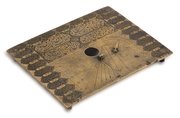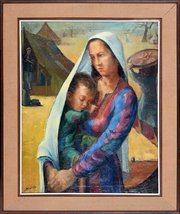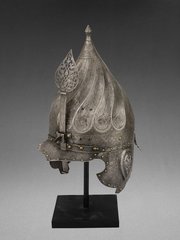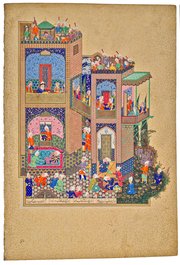
Mould-Blown Glass Cup
Museum of Islamic Art
- Title:
- Mould-Blown Glass Cup
- Production place:
- Central Asia
- Date:
- 1075 - 1125
- Period:
- Ghaznavid
- Title:
- Mould-Blown Glass Cup
- Production place:
- Central Asia
- Date:
- 1075 - 1125
- Period:
- Ghaznavid
- Material:
- Glass
- Technique:
- Mould‑blown, Pattern moulding, Applying
- Dimensions:
- 6.5 × 12 × 9
This pale-green glass cup belongs to a very small and rare group of lobed glass vessels with high-relief vegetal decoration. It is mould-blown and of a rounded form with a lobed rim, a short foot and an applied handle. It is decorated with vertical flutes, giving it a flower-like shape when viewed from above. A band of alternating vegetal palmette motifs in moulded high relief wraps around its body. A manganese-purple ring handle, topped with a flattened thumb-rest, is applied to the drinking vessel. Lobed bowls were usually made by Iranian potters and metalworkers who often used moulds to produce vessels of other shapes with similar vegetal decoration in relief. High-relief vegetal decoration and lobed rims were also created using methods other than moulding, especially relief cutting, in glass and pottery prior to the 4th-5th century AH/11th century CE. In view of its relationship to ceramic production, this glass cup was probably made during the Ghaznavid or Seljuq era (late 5th century AH/late 11th century or early 12th cenury CE).



